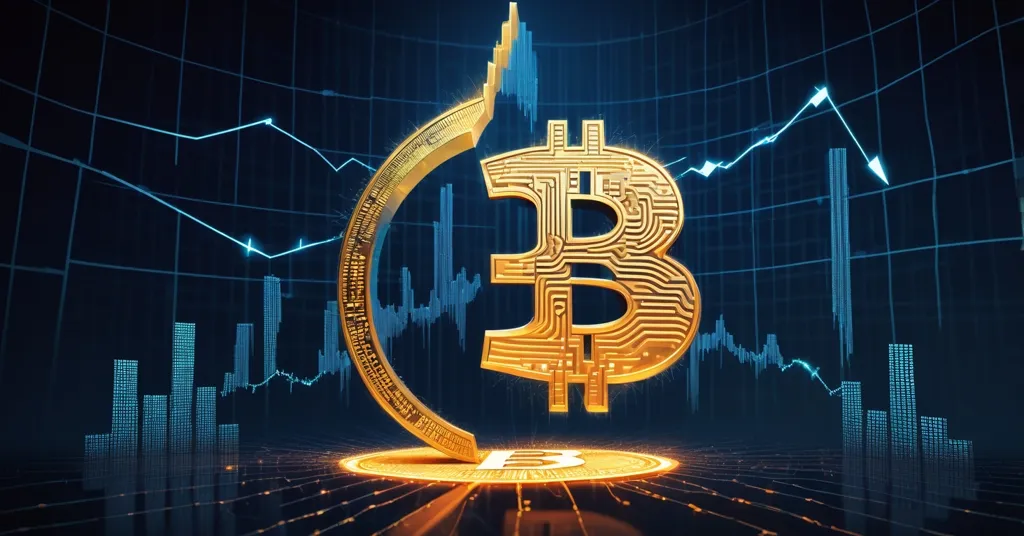Dollar Soars to Multi-Month High: Threat or Opportunity for Bitcoin and Crypto?

Dollar Surges to Multi-Month High: Economic Powerhouse or Crypto’s Next Challenge?
The U.S. dollar has charged to its highest level since June 23, racking up five straight days of gains in a streak unseen since February. Fueled by unexpectedly strong economic data, this surge is shaking up global currency markets, nudging Federal Reserve rate expectations, and posing hard questions for Bitcoin and the broader crypto ecosystem. Is this a death knell for risk assets, or a golden opportunity for decentralization?
- Dollar Dominance: Five-day rally pushes Dollar Spot Index up 0.3% to its peak since June 23.
- Economic Muscle: Robust U.S. growth, 2.5% core PCE inflation rise in Q2, and strong payrolls drive momentum.
- Crypto Stakes: Dollar strength and high rates might pressure Bitcoin, yet fiat volatility could boost DeFi appeal.
Dollar Surge: What’s Behind the Power?
The U.S. economy is showing undeniable strength, and the numbers back it up. Second-quarter growth got a lift from a modest increase in household spending, the backbone of consumer-driven markets. Meanwhile, the Federal Reserve’s go-to inflation measure, the core Personal Consumption Expenditures (PCE) index, jumped 2.5% in Q2 2024 compared to last year. For those unfamiliar, core PCE excludes volatile food and energy prices to reveal underlying inflation trends, and it’s a big deal for Fed decision-making. On top of that, ADP Research reported a hefty 104,000 job gain in private-sector payrolls for July, blowing past estimates of 75,000. This labor market grit is painting a picture of resilience that’s hard to ignore, as seen in the dollar’s fifth straight day of gains.
But let’s not get dazzled by headlines alone. Some experts, like Bernard Yaros from Oxford Economics, point to cracks beneath the surface—think significant declines in imports and federal spending, plus consumer budgets squeezed by trade policy fallout. The economy might be shifting to a lower gear, which could temper the dollar’s long-term bullish run. Still, for now, the greenback reigns supreme, and global markets are taking notice with its economic impact undeniable.
Federal Reserve’s Tight Grip: No Easy Money Ahead
With the economy humming, all eyes are on the Federal Reserve. Markets initially pegged a 60% chance of a rate cut in September, but that’s slipped to 48% after Fed Chair Jerome Powell signaled a cautious, data-driven approach. Rates are holding steady at 4.25%-4.5%, and Powell’s recent comments describe inflation as “somewhat elevated” while the labor market remains solid. This hawkish stance—prioritizing tighter policy over quick relief—makes the dollar a magnet for investors seeking safe havens over riskier bets like cryptocurrencies, as detailed in this expert analysis on Fed rate decisions.
Valentin Marinov, head of Group-of-10 FX strategy at Credit Agricole, nailed the sentiment:
“Markets may see the data as arguing for less aggressive and more back-loaded Fed easing. The USD rate appeal could grow especially if Fed Chair Powell stays true to his still rather neutral outlook on policy.”
For clarity, “back-loaded easing” means delaying rate cuts to later periods, keeping borrowing costs high for now. Marinov also took a swipe at political noise, adding:
“If the US data continues to signal resilience, President Trump may have to recognize that and even tone down his attacks on the Fed.”
Trump, of course, keeps pushing for lower rates, but the data offers little ammo for his case. The Fed’s focus on incoming jobs and inflation reports suggests they’re not bowing to pressure anytime soon. High rates could stick around, and that’s a double-edged sword for crypto markets hungry for liquidity, with potential ripple effects explored on how Fed policy impacts cryptocurrency.
Global Fallout: Fiat Volatility on Full Display
The dollar’s rise is sending shockwaves worldwide. The euro took a beating, sliding 0.65% to $1.1471—its lowest since June 23—for a fifth straight day of losses. This stumble ties to uneven economic performance in Europe, with Germany’s economy shrinking in Q2 while France outperformed expectations, sparking discussions on European economic weakness. Elsewhere, the dollar climbed 0.28% against the yen to 148.88, a two-week high, reflecting tensions and trade dynamics with Japan.
Trade policies are adding fuel to the fire. New U.S. tariffs of 25% on Indian imports start August 1, while a staggering 50% tariff on Brazilian goods shows an aggressive stance. Steve Englander from Standard Chartered offered perspective on the India move, which is further elaborated in this analysis of U.S. tariffs on Indian imports:
“Trump can afford to be harsh on India because he’s gotten a bunch of deals already and he’s trying to pressure them to be more forthcoming. I don’t think the tariffs will end as harshly as he hinted, but he does want to negotiate with India on terms favorable to the US.”
Recent trade agreements with Japan and the EU, plus ongoing talks with China to extend a 90-day tariff truce, keep currency markets on edge. This fiat instability—where currencies swing on policy whims—sets a stage where decentralized alternatives might shine, if only the world can see past the regulatory fog.
Crypto’s Crossroads: Risk or Reward?
So, why should Bitcoin enthusiasts care about a soaring dollar? Simple: macro trends steer market sentiment, and crypto isn’t immune. A stronger dollar paired with the Fed’s reluctance to cut rates could spell trouble for risk assets. Investors might ditch volatile plays like Bitcoin for safer, dollar-denominated options, especially if liquidity tightens. History backs this—past Fed rate hikes often saw Bitcoin prices dip as capital fled to yield-bearing assets, a trend reflected in the correlation between Bitcoin and dollar strength.
Yet there’s a silver lining. Every time a currency wobbles or a tariff lands, the case for financial sovereignty grows louder. Bitcoin, often called “digital gold” for its fixed supply of 21 million coins, has played lifeboat in countries like Venezuela and Turkey during currency crises. Could Europe, with the euro faltering and Germany contracting, see a similar pivot? Economic uncertainty might nudge investors toward BTC as a store of value, though wild price swings and regulatory hurdles—especially the EU’s MiCA framework aiming to standardize crypto rules—could slow the march, as debated in this Reddit thread on dollar surge effects on Bitcoin.
Then there’s decentralized finance, or DeFi, built on blockchains like Ethereum. These platforms, think Aave for lending or Uniswap for trading, use smart contracts—self-executing code—to cut out middlemen like banks. Fiat volatility from trade wars could drive interest in DeFi as a borderless hedge, with usage spikes often tied to currency chaos, a phenomenon explored in this report on DeFi growth amid fiat volatility. But let’s not kid ourselves: scams and security risks in some altcoin projects muddy the waters, and Bitcoin maximalists argue BTC’s battle-tested purity trumps all. I lean toward Bitcoin’s dominance, but dismissing altcoins is shortsighted—Ethereum’s programmable money fills gaps BTC doesn’t touch.
Trade Wars and Crypto: Chaos as Catalyst?
Trump’s tariff chess game might just destabilize fiat further. Tariffs on India and Brazil, alongside deals with Japan and the EU, risk crimping global growth. When economies shrink, speculative assets like crypto often bleed first—less disposable income means fewer retail investors buying Bitcoin. But here’s the flip: this very chaos exposes fiat’s flaws, potentially accelerating blockchain adoption. As champions of effective accelerationism, we see economic mess as a fast track to decentralizing finance, proving systems like Bitcoin can outlast policy blunders.
Still, no rose-colored glasses here. Global slowdowns could choke the capital crypto needs for mainstream traction. And let’s call out the nonsense: anyone peddling “$100K Bitcoin by year-end” amid this uncertainty is either delusional or scamming. We’re about real talk, not hype. Adoption hinges on proving blockchain’s worth, not empty price predictions.
Key Takeaways and Burning Questions
- How Does Dollar Strength Impact Bitcoin Prices and Crypto Risk Assets?
A stronger dollar and high interest rates often pull capital to safe havens, pressuring Bitcoin and other cryptocurrencies as investors shy away from volatile markets. - Could the Federal Reserve’s Hawkish Stance Affect Crypto Adoption?
Yes, prolonged high rates might curb short-term crypto enthusiasm, but they also spotlight centralized policy flaws, potentially driving long-term interest in decentralized systems. - Does Global Currency Volatility Create DeFi Opportunities?
Absolutely—trade tensions and fiat swings highlight DeFi’s appeal as a censorship-resistant alternative, though regulatory uncertainty remains a major barrier. - Is Euro Weakness a Catalyst for European Bitcoin Adoption?
It could be, as economic disparities in Germany and beyond push investors to diversify with Bitcoin, but market sentiment and strict EU regulations will shape the pace. - Can Bitcoin Outshine Dollar Dominance in a Crisis?
Possibly, if fiat instability worsens, Bitcoin’s fixed supply and independence from policy could shine, though macro risks like high rates pose near-term challenges. - How Do Tariffs Indirectly Affect Crypto Markets?
Tariffs can slow global growth, reducing retail crypto investment, but they also fuel fiat uncertainty, potentially positioning Bitcoin and DeFi as alternative financial tools.
The Road Ahead: Fiat’s Grip vs. Crypto’s Promise
The dollar’s reign, backed by U.S. economic might, isn’t fading soon. The Fed’s tightrope walk on rates will keep markets on edge, and trade wars add layers of uncertainty. For crypto advocates, this is both a hurdle and a rallying cry. We stand for decentralization, privacy, and smashing the status quo, and every fiat wobble is a reminder of why this matters. But let’s be brutally honest—adoption won’t come from blind cheerleading or scam-ridden hype. It’s about building solutions that deliver where centralized systems fail: stability amid chaos, freedom amid control. So, as the dollar flexes, the question lingers—will Bitcoin prove the ultimate safe haven, or will fiat’s stranglehold tighten before crypto breaks free?



